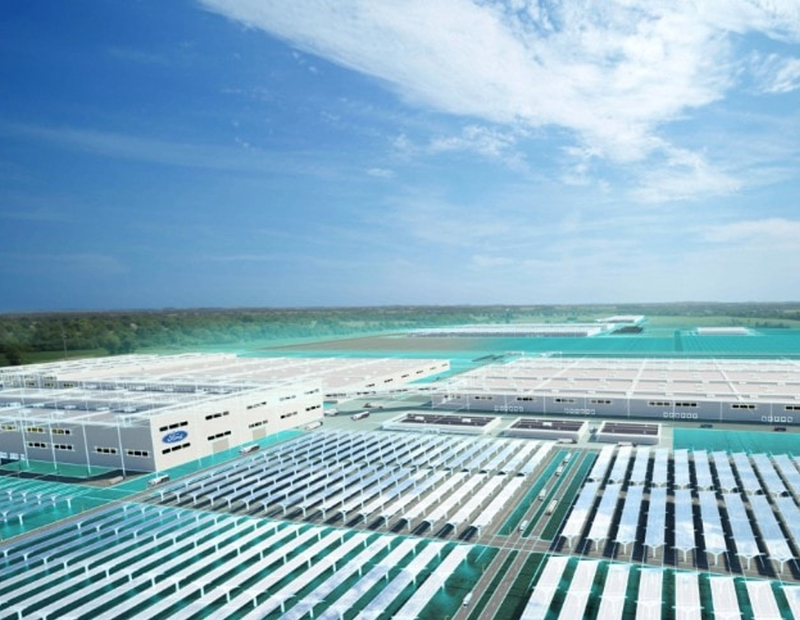MetLife’s $60 Billion Man
Robert Merck Leads a Real Estate Debt and Equity Giant By Paul Rosta, Senior Editor Among the ranks of commercial real estate executives, Robert Merck is something of a throwback. In an era when the notion of dedicating a career to a single company seems as old-fashioned as the Nash Rambler, Merck is marking his…
Robert Merck Leads a Real Estate Debt and Equity Giant
Among the ranks of commercial real estate executives, Robert Merck is something of a throwback. In an era when the notion of dedicating a career to a single company seems as old-fashioned as the Nash Rambler, Merck is marking his 30th anniversary this year with Metropolitan Life Insurance Co.’s real estate division. For almost a third of that time, he has headed MetLife’s real estate debt and equity businesses. The affable Georgia native, who frequently exhibits a dry sense of humor, theorizes that his loyalty is genetic. “When I started in ’82, I didn’t know I was going to be here for 30 years,” he noted. Merck’s father, too, spent three decades with a single firm, prompting the son to comment, “I guess it runs in the family.”
MetLife’s real estate portfolio performance under Merck’s stewardship makes a powerful case for durability. Merck oversees a $60 billion portfolio that includes real estate debt valued at $41 billion, $8.5 billion in equity investments and $12.8 billion worth of agricultural mortgages. Last year alone, its real estate originations reached $11 billion, a new company record. That production made MetLife the insurance industry’s most prolific real estate lender and the second biggest overall, after Wells Fargo, according to the Mortgage Bankers Association. Merck courteously sidesteps a request to project a tally for 2012, except to say that he expects another robust year.
True to its reputation as an institutional lender, MetLife favors a conservative strategy for mortgage lending and equity investment: reliably income-producing properties in strong markets, all held on its balance sheet. The mix has stayed fairly consistent in recent years. High-quality office properties dominate the lending portfolio, accounting for 45 percent of MetLife’s current loans. Recent financings for trophy office properties include a $300 million, 10-year loan on the Bank of America Center, the 1.8 million-square-foot asset that encompasses 555 California St., 315 Montgomery St. and 345 Montgomery St. in San Francisco. The loan, obtained by MetLife client Vornado Realty Trust, is part of a $600 million mortgage divided equally between MetLife and Pacific Life Insurance Co. Another 2011 highlight was a $250 million mortgage on Washington Square, a 12-story, 1 million-square-foot Class A office building at 1050 Connecticut Ave., N.W., in Washington, D.C. Jointly owned by Lerner Enterprises and the Tower Cos. of Rockville, Md., the property recently underwent a $14 million renovation.
After office, the retail sector is MetLife’s second-largest client, accounting for 24 percent of its real estate loans. Rounding out the mortgage portfolio are multi-family (10.5 percent), industrial (7.9 percent), hotel (7.7 percent) and miscellaneous other assets (5.2 percent). Merck is bullish on multi-family and has worked to increase MetLife’s exposure in the category, despite frequently challenging conditions. “We’d like to grow it more, but it’s difficult sometimes to compete,” he said. That competition comes particularly from Fannie Mae and Freddie Mac, which are tough for even a powerful player like MetLife to beat.
Merck was first drawn to real estate some 30 years ago, while majoring in finance at Emory University in Atlanta. He enrolled in the sole course on real estate that the school then offered, which he credits with inspiring his interest in real estate finance. By way of saying thanks, Merck sits on the advisory board of the Emory Goizueta Business School and notes proudly that Emory’s real estate program has evolved into one of the most respected in the country. After earning his degree with highest honors, he went to work for a savings and loan in Atlanta and took evening classes toward an M.B.A. at Georgia State University.
As Merck was finishing up his graduate degree, he learned that MetLife’s real estate department was recruiting and got an interview that led to a job offer. Ironically, the salary offered by MetLife was not the highest he received, but Merck realized the job would give him entree into the real estate finance business and took it anyway.
Merck describes the mid-’80s as “an opportune time to start a career.” He began by analyzing equity investments for the firm, and the robust market of the day gave him plenty of early exposure to investment and development. In 1988, he was asked to relocate to Charlotte and launch an office for the company there. It was the first in a series of assignments that would keep him on the move for the next dozen years. Merck ran the Charlotte office until 1992, when MetLife assigned him to shore up the company’s shaky office in Tampa. Once that mission was accomplished in 1996, he was appointed head of the company’s equity real estate investments in the Southeast and Southwest. The promotion took him back to Atlanta for the next three years.
After nearly two decades at MetLife, Merck assumed a national role in 2001 when he was asked to run its real estate equity platform for the entire country. The opportunity also required him to leave his home state behind once again; he relocated to the company’s office in Morristown, N.J., a New York City suburb located a train ride away from the parent company’s headquarters in Midtown Manhattan. In 2003, Merck was promoted to his current position as head of the real estate debt and equity platforms. A year later, he was put in charge of agricultural investments, as well.
Upon taking over MetLife’s commercial real estate unit, Merck was tasked with expanding a mortgage portfolio then valued at $20 billion. He assessed the lending business and realized that he would have to fix a serious image problem: MetLife was saddled with a reputation as a sluggish decision-maker. “In ’03 and ’04, borrowers would say, ‘You’re so hard to work with,’” he recalled.
Merck ordered an overhaul that streamlined underwriting procedures and created a more user-friendly approach to customer service. When clients would greet news of the improvements with skepticism, he would respond, “Let’s get you in the door, and then we’ll see what you think.’”
Since Merck recharged his unit’s best practices, annual loan production has quadrupled, from $2.5 billion to more than $10 billion. Merck cites another telling statistic: Eighty percent of MetLife’s origination business by value comes from repeat customers.
MetLife’s commercial real estate business got through the Great Recession virtually unscathed, thanks to the foresight of Merck and his brain trust. “We started having concerns about the way values in the market were going up,” he said. “We didn’t think it was sustainable.”
The Contrarian
Loan-to-value ratios of 90 percent, years of interest-only payments and skyrocketing property prices were all red flags. He met the go-go years with a contrarian mindset. While other lenders scrambled for business by offering excessively generous terms, Merck tightened underwriting. MetLife lowered its typical loan-to-value ratio to 65 percent—a requirement even stricter than the relatively conservative LTVs of 70 to 75 percent then offered by other life companies.
Merck’s decisions paid off handsomely. Since 2008, the company has tallied only minimal mortgage-related charge-offs. That helped MetLife get back in the game in 2009—much earlier than most other shops. “There wasn’t a lot of lending going on in the market, so we were able to do some very conservative deals at very attractive spreads,” he recalled.
Merck likewise showed a knack for timing on the equity side. As prices rose to dizzying heights, he saw a rare opportunity to test the market. What resulted were several of the biggest commercial real estate transactions in history.
In early 2005, MetLife sold One Madison Avenue, a 1.4 million-square-foot, two-building complex that takes up the block between 23rd and 24th streets in Manhattan. A century ago, MetLife commissioned the older of the two buildings, the 113-year-old Clock Tower, for its headquarters. SL Green Realty Corp. paid $918 million for the complex.
In May of that year, Tishman Speyer Properties paid $1.7 billion for the MetLife Building, the 2.8 million-square-foot office tower adjacent to the Grand Central rail hub at 200 Park Ave. The price tag was touted as the highest ever commanded by a single property in New York City, if not the nation. As part of the transaction, MetLife arranged for the property to keep its longtime name.
Formidable as they were, MetLife’s sales of One Madison and 200 Park Ave. in 2005 proved to be a prologue. The following year, it put yet another Manhattan trophy asset on the block: the multi-family complex collectively known as Stuyvesant Town and Peter Cooper Village. Located on First Avenue between 14th and 23rd streets, the developments collectively encompass 11,232 units in more than 100 buildings. MetLife had built the complex in response to the post-World War II housing shortage.
Merck purposely set a tight two-month window for bidding “because we didn’t know how long the strong market would continue,” he explained. He then put most of his other duties on temporary hold in order to work on the sale full time. The scale of the properties and the pace of the deal required an all-hands-on-deck approach that brought together sales, government relations, legal and other specialties. Looking back six years later, Merck regards the episode as the professional experience of a lifetime. “What I find the most interesting and fulfilling is that we put together a very strong team, both inside Met and outside Met,” he said.
Setting a new U.S. record, the Stuyvesant Town-Peter Cooper complex commanded $5.4 million from a joint venture of Tishman Speyer Properties and BlackRock Realty. In the years since, the transaction has come to symbolize the peaks and valleys of the past decade. By November 2009, the properties had been turned over to special servicing. After defaulting on a $3 billion first mortgage, in January 2010 Tishman Speyer and BlackRock handed the keys to the first-mortgage holder, CWCapital Asset Management. MetLife itself did not escape entirely untouched from the controversy that inevitably follows a high-profile deal of unprecedented scale. The company found itself among multiple defendents that were named in a 2007 complaint by several thousand residents of the complex, who alleged that they had been improperly charged market-rate rent prices between 2003 and 2006. Early this year, MetLife resolved its part of the litigation when it settled with the plaintiffs. For all the complexities that may have accompanied the Stuyvesant Town/Peter Cooper transaction and others of the era, the billions of dollars in proceeds MetLife realized stood it in good stead, both during and after the recession.
Today, Merck continues to stress prudence on the equity as well as the debt side. High-quality, income-producing assets in core markets account for upwards of 80 percent of MetLife’s investments. The company is an equity partner in such projects as 12th & Midtown, the 1 million-square-foot master-planned development in Midtown Atlanta. To diversify the portfolio, it also selectively considers high-caliber properties that present a strong potential upside. “We do look for opportunistic transactions where we feel like we can use our size and our expertise to get a higher return,” Merck explained.
Opportunity Knocks
That strategy characterizes one of MetLife’s highest-profile acquisitions of the year: In early August, It closed on a deal for Reynolds Plantation, a 14,000-acre resort community in Georgia. Located about 70 miles east of Atlanta on Lake Oconee, the property is “a hidden jewel” that ranks among the premier assets of its kind in the Southeast, according to Merck. It encompasses a 251-key Ritz-Carlton Lodge, a luxury lakeside resort, six golf courses, four marinas, a tennis center, a wellness campus and a variety of outdoor recreational activities. For an institutional investor like MetLife that thinks long term, the potential offered by the property’s 5,000-plus undeveloped acres represents a particularly attractive feature.
In Reynolds Plantation, Merck said, “we saw a very high-quality asset with a very strong brand name and reputation, but one that had fallen on some hard times because of the recession.” In early 2011, the property’s development company, controlled by veteran investor Mercer Reynolds, was unable to meet lenders’ demand for a $45 million payment. That May, a consortium of lenders led by Bank of America took legal action to request a court-appointed receiver. By the time MetLife acquired the property, it had been in receivership for more than a year. MetLife is working with Ritz-Carlton to spruce up the hotel, and brought in Daniel Corp., a frequent collaborator, to oversee day-to-day operations at Reynolds Plantation.
As Merck looks toward future growth, he regularly turns his attention beyond U.S. shores. MetLife operates mortgage banking offices in London, Tokyo and Mexico City. When the debt crisis hit European banks, he explained, “we saw an opportunity to ramp up our first-mortgage lending.” That led to $800 million in originations through its London office in 2011. A $600 million year in Mexico and new loans in Japan valued at $453.5 million added up to a tidy record of production.
As the crow flies, about 7,000 miles separate MetLife Real Estate’s Tokyo and Mexico City offices, the two most distant points of Merck’s bailiwick. It is an imposing stretch of turf to keep an eye on, but even after 30 years in the business, his vision is as clear as ever.








You must be logged in to post a comment.